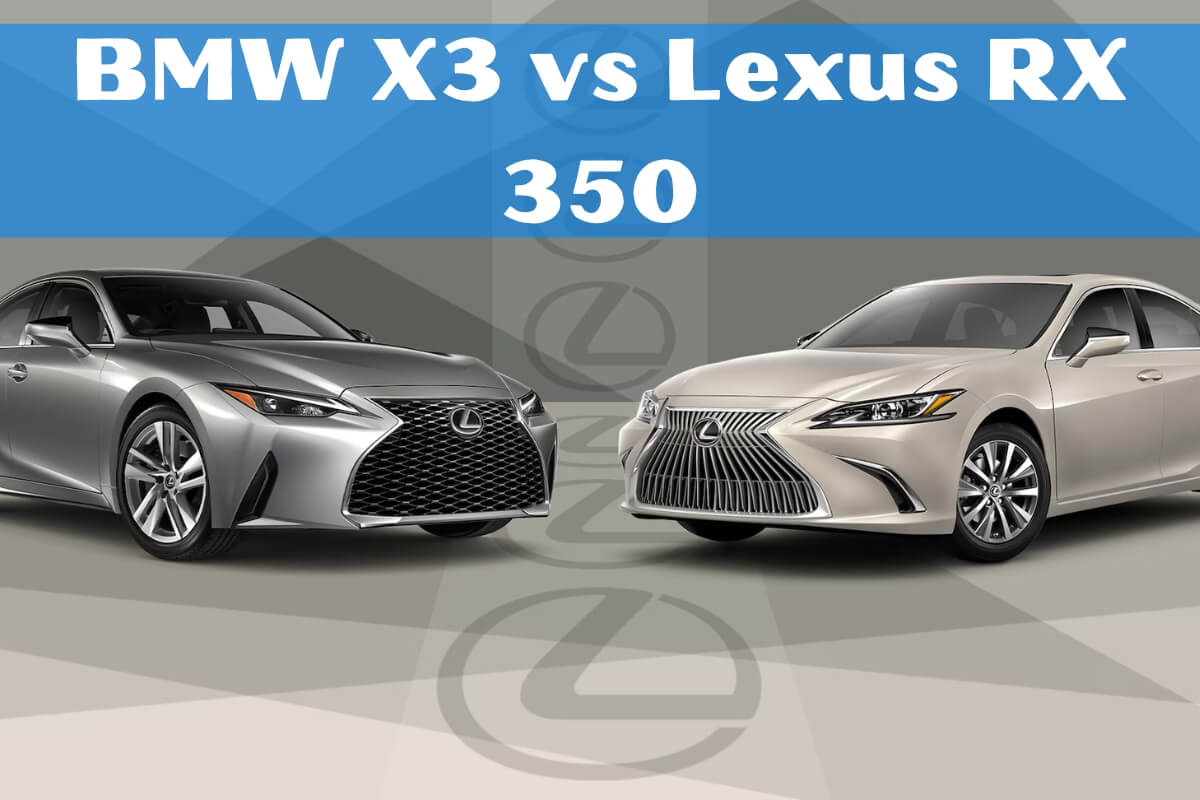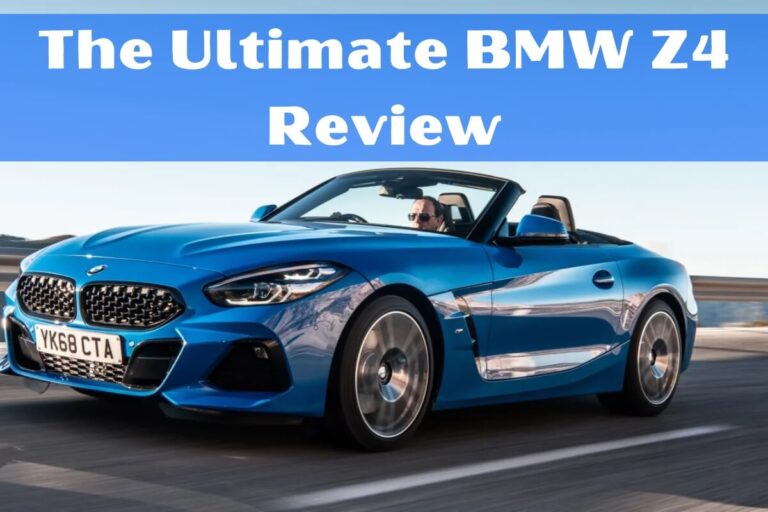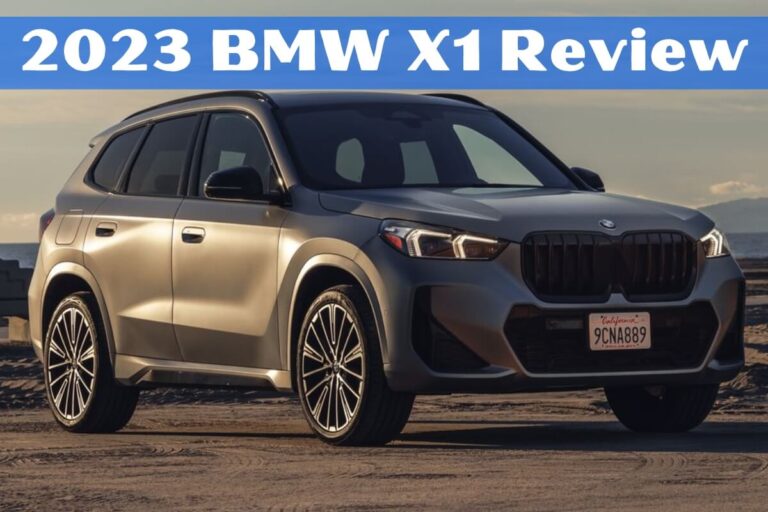BMW X3 vs Lexus RX 350: Comparing Luxury Compact SUVs

When it comes to premium compact SUVs, the BMW X3 and Lexus RX 350 are two of the most sought-after models on the market. Both offer upscale interiors, powerful performance, and the latest tech features. However, they differ in several important areas.
In this guide, we’ll take a close look at how the BMW X3 stacks up against the Lexus RX 350 across categories like performance, interior space, standard features, pricing and more. By the end, you’ll have a clear picture of which luxury compact SUV better suits your needs and preferences.
Performance and Driving Dynamics
For many luxury vehicle buyers, performance is a top priority. If you’re looking for an SUV that delivers an engaging driving experience, the BMW X3 holds an advantage over the RX 350.
The X3 is available with two powerful engine choices – a 248 horsepower 2.0L turbocharged four-cylinder (0-60 mph in 6 seconds) or a 382 hp 3.0L turbo inline-six with mild hybrid assist. Either engine is paired with a quick-shifting 8-speed automatic transmission.
In contrast, the Lexus RX 350 comes standard with a 275 hp 3.5L V6 engine mated to an 8-speed automatic. While plenty powerful, it doesn’t quite match the punchy turbocharged acceleration of the top X3 engine.
The BMW X3 also has the edge when it comes to handling dynamics. Its perfectly weighted steering and minimal body lean make it feel more like a sport sedan than a compact SUV when going around turns. The RX 350 has a more comfort-tuned suspension aimed at delivering a plush, isolated ride.
If you want maximum traction in slippery conditions, both SUVs offer all-wheel drive systems – the xDrive system in the X3 and the Dynamic Torque Control AWD system in the RX 350.
For fuel efficiency, the X3 rates slightly better at up to 23 mpg city and 29 mpg highway versus 22/29 mpg for the RX 350. However, the RX 350 is also available as a hybrid model for even greater efficiency.
Interior Space and Comfort
While the BMW X3 may win out in performance, the Lexus RX 350 fights back by providing a more spacious and arguably more luxurious cabin for passengers.
Up front, the RX 350 offers an extra inch of legroom over the X3. Move to the second row and the advantage grows, with the Lexus boasting over 2 inches of extra legroom to stretch out. Taller passengers will also appreciate the RX’s slightly more generous headroom measurements.
When it comes to carrying cargo, the BMW X3 has a clear advantage in capacity. It provides 28.7 cubic feet of space behind the second row and up to 62.7 cubic feet with the rear seats folded down. The RX 350 max cargo room tops out at 16.0 cu ft behind the second row and 46.2 cu ft overall – quite a deficit.
Both SUVs come standard with high-quality cabin materials like wood trim and leather-wrapped steering wheels. However, the Lexus interior simply feels a bit more refined and luxurious, especially in higher trim levels.
Road and wind noise are nicely muted in both vehicles, though the RX 350 may have a slight edge in sound insulation. Both offer available luxury features like heated and ventilated front seats, panoramic sunroofs, ambient lighting and more to spoil occupants.
Infotainment and Tech Features
When it comes to infotainment and connectivity tech, the BMW X3 and Lexus RX 350 are quite evenly matched with their standard and available features.
The X3 comes with BMW’s latest iDrive 8 system featuring a curved 12.3-inch digital instrument cluster and 14.9-inch central touchscreen. The RX counters with the Lexus Interface multimedia system and dual 9.8-inch and 7-inch displays. Both systems include smartphone integration via Apple CarPlay and Android Auto.
For audiophiles, the RX 350 offers an available Mark Levinson 21-speaker premium audio system, outdoing the X3’s available 16-speaker Harman Kardon setup in sheer speaker count.
Both compact luxury SUVs are also generously equipped with advanced safety tech like:
- Forward collision warning with automatic emergency braking
- Blind spot monitoring
- Rear cross-traffic alert
- Lane keeping assist
- Adaptive cruise control with stop & go
The BMW takes safety a step further by offering more advanced tech like a head-up display, parking assistant, and even hands-free driving assist in the highest trims.
Exterior Design and Dimensions
The exterior styling of the BMW X3 and Lexus RX 350 caters to somewhat different design tastes. The X3 has a sleek, muscular look reflecting its performance leanings, while the RX goes for a more elegant yet subdued luxury SUV shape.
In terms of exterior dimensions, the X3 has a slightly smaller overall footprint. It measures 185.9 inches long, 74.4 inches wide, and 66 inches tall compared to the RX 350 at 192.5 x 75.6 x 67.3 inches. The shorter length of the BMW gives it an advantage in tighter spaces.
However, the Lexus RX makes up for its larger size with a very tight 37.4-foot turning circle – impressive for its size and only slightly wider than the 39-foot turning circle of the X3.
Both luxury SUVs offer wheel sizes ranging from 18 to 21 inches depending on the trim level selected. The BMW X3 has slightly more generous ground clearance at 8.0-8.4 inches versus 6.9-8.1 inches for the RX, giving it a minor advantage for light off-roading.
Pricing and Value
When it comes to pricing, the BMW X3 holds a distinct cost-of-entry advantage over the Lexus RX 350. The X3’s Manufacturer’s Suggested Retail Price (MSRP) starts at $46,900 for the base sDrive30i trim. Comparatively, pricing for the RX 350 kicks off at $48,600.
That gap grows even larger when you look at the top trim levels of each SUV. A fully loaded X3 M40i tops out around $61,900, while a range-topping RX 350 can reach over $69,000.
However, it’s important to factor in the stronger residual values and lower maintenance costs associated with the Lexus brand. Over five years of ownership, the RX may end up being the more cost-effective choice despite the higher sticker price.
In terms of standard equipment, the base X3 and RX 350 are quite comparably equipped. Both come with LED exterior lights, dual-zone automatic climate control, power liftgates, and a full suite of driver assistance technologies.
The Lexus does include some additional standard niceties like a larger 9.8-inch touchscreen, 18-inch alloy wheels, and blind spot monitoring with rear cross-traffic alert that are optional extras on the BMW. So it delivers a bit more bang for the buck in base trim.
The Verdict: Which Luxury Compact SUV is Right for You?
After this in-depth BMW X3 vs Lexus RX 350 comparison, it should be clear where each model holds advantages. Here’s a quick recap:
Go with the BMW X3 if:
- You prioritize sporty performance and handling dynamics
- You need maximum cargo hauling space
- You want access to the latest driver assistance technology
- Aggressive, athletic SUV styling appeals to you
- Lower upfront costs are a top priority
Pick the Lexus RX 350 if:
- A smooth, luxurious ride quality is most important
- You want a quieter, more refined cabin experience
- Greater passenger room/interior space is a must
- You prefer understated yet elegant styling
- Long-term ownership costs are a key factor
Of course, many buyers will find both the BMW X3 and Lexus RX 350 appealing in their own ways. The smart move is to get behind the wheel and experience each compact luxury SUV for yourself. That’s the best way to determine which model is the perfect fit for your needs and tastes
Scheduling a test drive at your local BMW and Lexus dealerships will allow you to get a true feel for how these vehicles drive, as well as inspect their cabins up close. Pay close attention to aspects like:
- Seat comfort and support for your body type
- Visibility from the driver’s seat
- Ease of using the infotainment controls
- Acceleration response and steering feel
- Overall ambient noise levels
You may also want to bring along any important cargo items or car seats to ensure they fit properly in the cargo area or back seats of whichever SUV you’re considering.
When test driving, be sure to experience a variety of driving conditions too. See how the BMW X3 and Lexus RX 350 handle areas with:
- Smooth highways
- Tight parking lots
- Rough city streets
- Windy rural roads
This will give you the best sense of ride compliance and handling capabilities in real-world situations you’d encounter regularly.
Of course, resale value and cost of ownership factors should be weighed as well if you plan on keeping your new luxury compact SUV for several years. Lexus typically has a strong advantage in predicted residual values and lower service/maintenance expenses.
Ultimately, there is no objectively “better” choice between the BMW X3 and Lexus RX 350. They both deliver a premium SUV experience tailored to suit different priorities and preferences. The most important thing is choosing the model that best aligns with your lifestyle and driving needs.
In Conclusion
The BMW X3 and Lexus RX 350 are two exceptional examples of what to expect from a compact luxury SUV in the modern era. The X3 distinguishes itself with potent turbocharged performance, precise handling, and best-in-class cargo room. Meanwhile, the RX 350 counters with an ultra-refined cabin, more spacious accommodations, and a smoother, more isolated ride.
While they take slightly different approaches, both models deliver premium amenities, cutting-edge technologies, and the upscale driving experience SUV buyers in this segment are after. Whether you prioritize sport or luxury leanings, you really can’t go wrong with either the BMW X3 or Lexus RX 350.
The key is to carefully assess your unique needs and priorities, and then get some personal seat time in both vehicles to decide which SUV checks all the right boxes for you. With their abundance of strengths, the BMW X3 vs Lexus RX 350 battle is sure to wage on for years to come.






